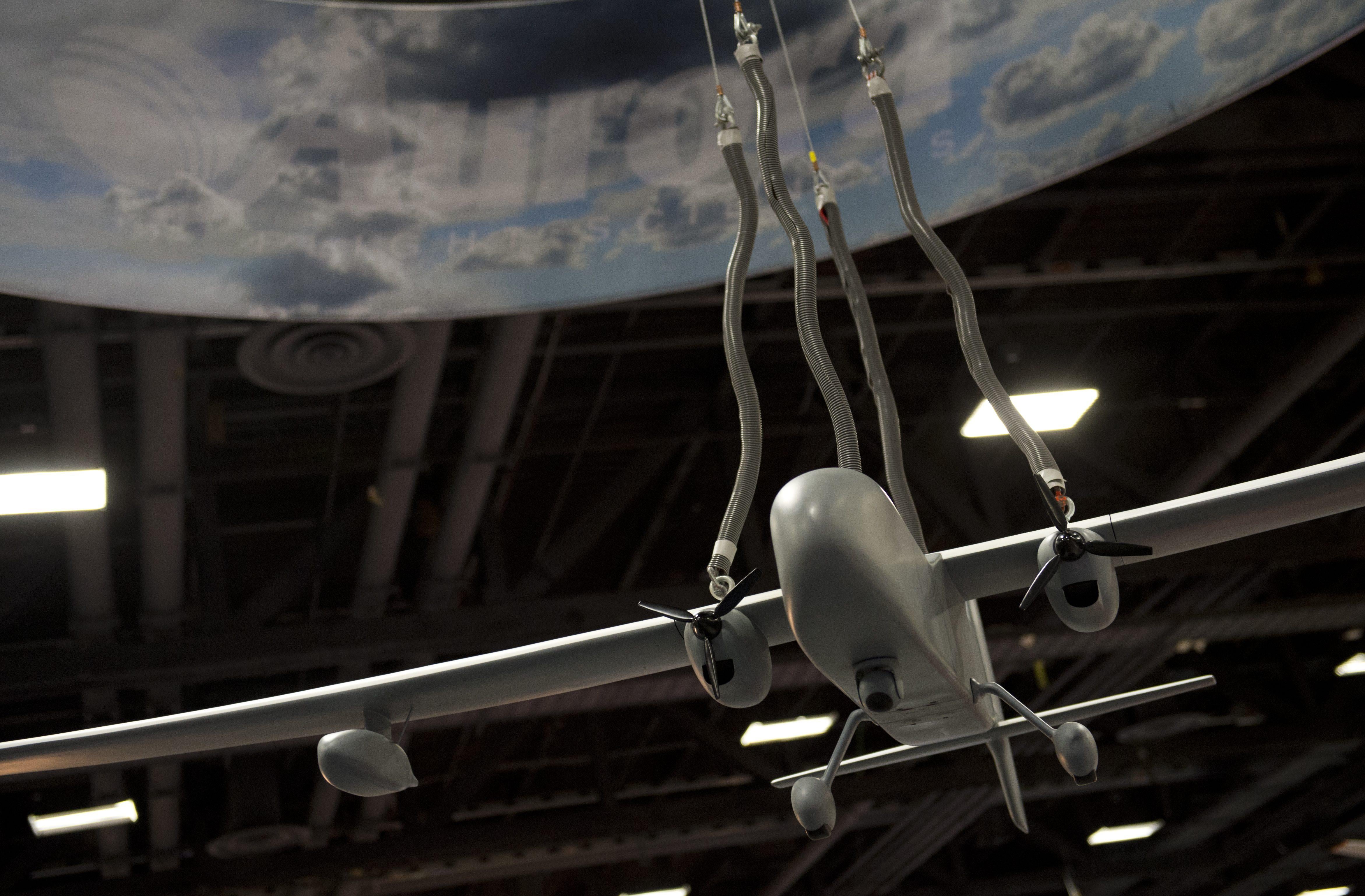At this week’s industry conference on drones, in Washington, D.C., a group of police and fire chiefs gathered to discuss how to increase their use of drones. But they used a different term: “UAS operations.” (UAS stands for “unmanned aircraft system.”)
You see, they have a problem with the word drone, wary of its negative connotations. They are trying to do their jobs, which are difficult, as best they can. They feel drones and the people who fly them have been unfairly demonized. “We need to band together,” said Jon Hansen, the head of Oklahoma’s Council on Firefighter Training, speaking to the police officers in the room.
Hansen showed aerial photos taken after the recent tornado that struck Moore, Okla. They were devastating images, and it’s easy to understand his resentment at being castigated by protesters, one of whom stormed the conference to say, “You have the blood of innocent children on your hands. Time to ground the killer drones!” Hansen talked about his experiences in the aftermath of the 1995 Oklahoma City bombing, and of the anguishing thought that people who survived the blast died, buried in rubble, because he was unable to get to them in time. He wants as much information as he can get, as quickly as possible. It is an understandable desire.
But however well-intentioned Hansen is, his desires are also dangerous. He spoke openly about using the success of unmanned aerial systems after the next catastrophic event—natural or man-made—as a marketing opportunity to convince the public that drones are life-saving technologies. An audience member chimed in: “Law enforcement does not do a good enough job of flaunting our successes.” He went on to say he’d barely heard the word surveillance spoken at the conference—instead, people were saying “situational awareness.” This was smart, he said, because “surveillance” makes people uneasy.
But the fire and police chiefs are making a big mistake. The words surveillance and drone aren’t what make people uneasy. It’s the concepts themselves. Drone is a good word because it accurately captures—as words do better than acronyms—the overlapping technologies by which aircraft fly without humans in the cockpit. The alternatives all fail in one respect or another. Aside from being unwieldy, they are precise in inaccurate ways. UAV, or unmanned aerial vehicle, neglects the man on the ground controlling the aircraft. It is also latently sexist, though the alternative “Uninhabited aerial vehicle” seems to imply that F-16 pilots have taken up residency in rent-controlled cockpits. Unmanned aerial system—the UAS of the conference session’s title—is even worse, in that “system” is a word of willful vagueness. Remotely piloted vehicle, or RPV, fails on the grounds that such aircraft are increasingly autonomous.
Drone has also been used for far longer than its detractors realize.
As the New York Times wrote—back in 1946—the term drone has been used since the 1930s. “It is safe to say that a simplified and reliable system of drone control—with all that it implies—has been achieved,” Hanson Baldwin wrote nearly 70 years ago. Then as now, the industry was overeager to state the capabilities of their creations.
As Sonia Sotomayor wrote in a 2012 concurring Supreme Court opinion, “Awareness that the Government may be watching chills associational and expressive freedoms. And the Government’s unrestrained power to assemble data that reveal private aspects of identity is susceptible to abuse.“ Sotomayor also said that “nontrespassory surveillance techniques”—like drones—have not yet been analyzed with care by lawyers nor have their implications been fully assimilated by the public.
It isn’t the word surveillance that makes me uneasy—it is the fact of the matter that it refers to. Overly strident and broad protests against “killer drones” obscure the issue, but so do conscious attempts by law enforcement to cynically use disasters to gain public acceptance for new technologies that broadly expand their powers.
To state the obvious and tautological: Drones have both good and bad uses and implications, which deserve a full public airing. The same is true of widespread surveillance by public safety authorities, whether from drones, blimps, or fixed cameras or over the Internet. Euphemism and neologism hurt that debate.
Police and fire chiefs should know this. But their love of acronyms stems from some deeper instinct, which is foreign to me. It isn’t confined to the new, or the airborne. One of them referred to the friendly reception he usually got from the public when he showed up in a BRT. The room laughed, knowingly. It took me a minute, but I got there: Big Red Trucks.
